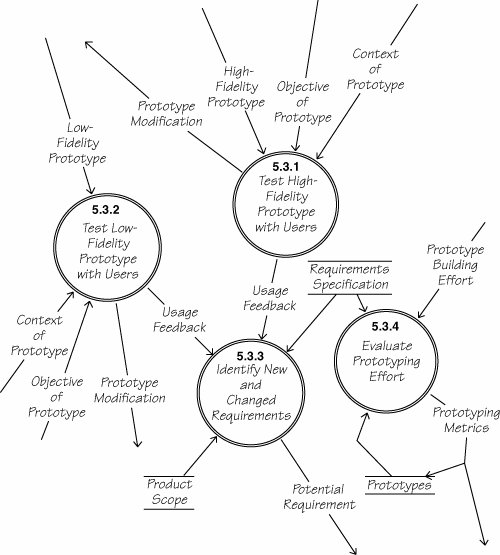Build high-fidelity Prototype (Process Notes 5.2.2)
| A high-fidelity prototype is a simulation model that is built using some kind of automated product. Its aim is to bring alive those aspects of the system that are related to the objective of the prototype. The best prototyping products highlight those aspects of the system that are relevant to the user. A prototyping product is counterproductive if it requires the user to know things that are relevant only to the internal system design. The following types of high-fidelity prototypes might be suitable:
When building a high-fidelity prototype, you are in an awkward position. On the one hand, you want to build a prototype that makes the system look as real as possible so that the user will give you relevant feedback. On the other hand, you want the user to remember that this simulation is not the real system and you can't deliver all the functionality just like that. You can reflect the unreality by the names you use. For instance, a customer name of Alice in Wonderland serves as a continual reminder that there's a lot to do before the prototype becomes a real system. Modify the prototype to satisfy the usage feedback. This feedback results from using the prototype with the user(s). Ideally, the prototype is actually built with the user's assistance, in which case the usage feedback is immediate. If the prototyping product has an interface that is understandable to the user, then the prototype can be built in conjunction with the user, and this task can be done in parallel with the task "Test prototype with users." Otherwise, it is better for the analyst to build the prototype and then test it with the user. Keep track of the effort involved in building the prototype. This information provides input for doing estimates for the later phases of the project. Diagram 5.3. Evaluate the Prototype |
EAN: 2147483647
Pages: 371